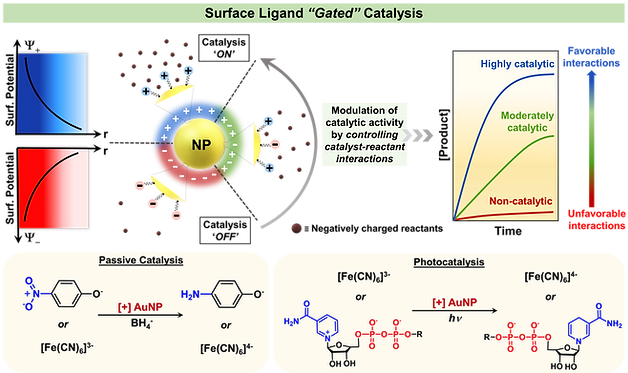

Plasmonic photocatalysis: Forming and breaking the bonds
Light-matter interaction has emerged as the key to achieving many challenging chemical transformations that are otherwise not possible with thermal energy. Consequently, the use of light to bring out a chemical transformation - photocatalysis - has become an integral part of the area of catalysis. Our particular focus lies on plasmonic materials for solar-to-chemical energy transformation by utilizing their unique phenomenon of localized surface plasmon resonance. When surface plasmon decays, energetic charge carriers, commonly known as “hot” charge carriers are generated. These hot electrons and holes are capable of triggering chemical reactions on the NP surface, which otherwise are thermodynamically uphill or kinetically hindered.
Our group places an emphasis on developing strategies to understand and unravel activity and selectivity- two major roadblocks in plasmonic catalysis. One of the strategies involves regulating the catalyst-reactant interactions using the appropriate surface chemistry of the nanoparticles. Our approach of “ligand-directed” catalysis can be utilized efficiently to achieve selectivity in multielectron chemical transformations as well. We are also interested in designing plasmonic-catalytic multicomponent systems to manipulate the thermodynamic balance of a chemical transformation through a synergistic effect of traditional catalytic materials and plasmonics.
Representative Publications: Adv. Optical Mater. 2022, Chem. Mater. 2022.
Students in-charge: Vanshika Jain, Ankit Dhankhar, Shreya Tyagi

